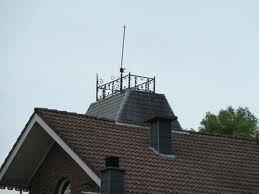
“Widow’s Walk” Live October 29 2014
This performance was delivered live to an audience of Chief Information Officers, most of them Brazilian, at Gartner’s Brazil Symposium on October 29, 2014. I played into a Shure 58 mic, which was amplified via a small PA system (I don’t think the woofers were bigger than 8 inches, if that) with zero FX. It was recorded via the builtin microphones on my Zoom H4, and no post-processing was applied to the recording.
“Widow’s Walk” is one of my most complex and moving (in every sense of the word) compositions for diatonic harmonica, and this live performance of the piece shows the various lines and textures off well. It begins in first position on a G Natural Minor harmonica, i.e. in the key of C minor. Before it’s over, it’s toured G minor and Eb major as well. The textures include counter-melodies played out of both sides of the mouth at once, octaves, 10ths, and 12ths, 5ths and 4ths, single notes, and block chords. The Natural Minor tuning makes almost any combination of notes sound good, so you can get a wide range of voicings and big sounds all over the instrument. The independent lines span intervals up to a minor 13th, with movement at both ends.

I work a lot with a looper, and some may assume that this piece is performed using looped or pre-recorded material, or that I overdubbed additional parts post-performance. In fact, everything in this performance is done with a single harmonica and a single player, playing in real time. There are no overdubs of any kind. This is harmonica solo, period.
Widow’s Walk Performed by Richard Hunter October 29 2014
Audio Player
The piece makes no overt references to the blues in terms of tone, timbre, and articulation; there are no bluesy bends, no hand wahs, no throat vibrato. But the blues is evident in some of the lines in the piece, as it is in just about all my work. Other influences include Bartok and Debussy.
A “widow’s walk,” of course, is a structure built on top of a house to allow a woman to stand on the highest point available and look out to sea for a ship (the ship on which her man sailed, perhaps years earlier). You can hear the ocean in a number of places in this piece. That said, I wrote the piece before I named it; in fact, my daughter Susan named it after I wrote it and performed it for her. Any influence of the sea on the piece was unintentional; I wrote it just before or just after I left Vermont, in 1995, for Connecticut, and neither of those places is really much about the ocean, though the sense of space in Vermont has something of the vastness of the ocean in it. I suppose I heard the ocean often enough during the 15 years I lived in Falmouth, Massachusetts to make a lasting impression.
This recording was made in the same performance as my duet with Wim Dijkgraaf on Comin Home Baby. It was a pretty good day for harmonica.
“Widow’s Walk” is one of the many astounding works for harmonica solo included on my CD “The Second Act of Free Being,” which you can get at CDBaby.
Enjoy.
Tags In
Related Posts
3 Comments
Leave a Reply
You must be logged in to post a comment.
WHAT’S NEW
Categories
- Audio/Video
- Blog
- Blue Future
- Digitech RP Tricks and Tips
- Discography, CDs, Projects, Info, Notes
- Featured Video
- For the Beginner
- Gallery
- Hunter's Effects
- Hunter's Music
- Huntersounds for Fender Mustang
- Meet the Pros
- More Video
- MPH: Maw/Preston/Hunter
- My Three Big Contributions
- Player's Resources
- Pro Tips & Techniques
- Recommended Artists & Recordings
- Recommended Gear
- Recorded Performances
- Reviews, Interviews, Testimonials
- The Lucky One
- Uncategorized
- Upcoming Performances
- Zoom G3 Tips and Tricks
Loved it! I play some and realy appreciate the sound and how much time it takes to develop the skills to play …awesome job!
The favourite tune from your stuff!
@ Boris: yeah, it’s one of my favorites too. Covers a lot of ground in a few minutes, and introduces some new approaches to harmonica in the process.